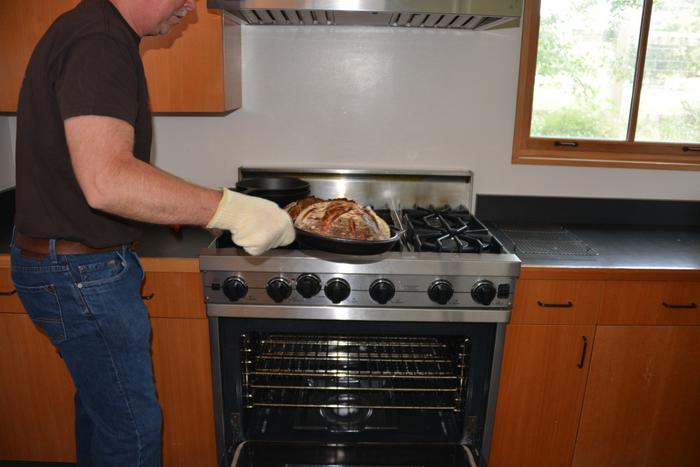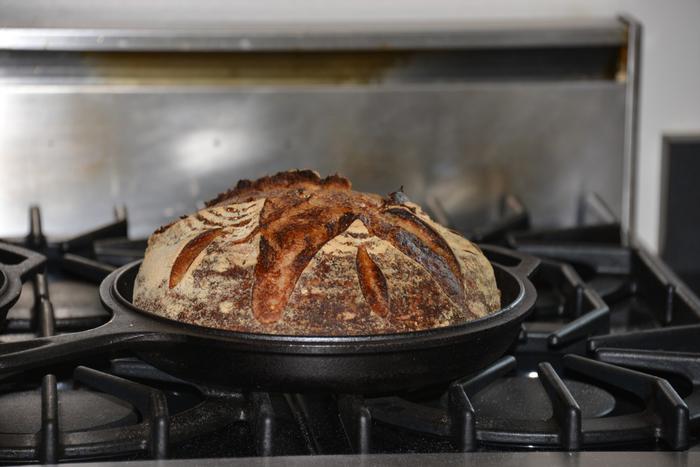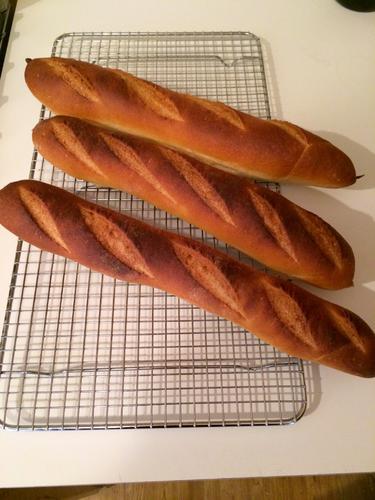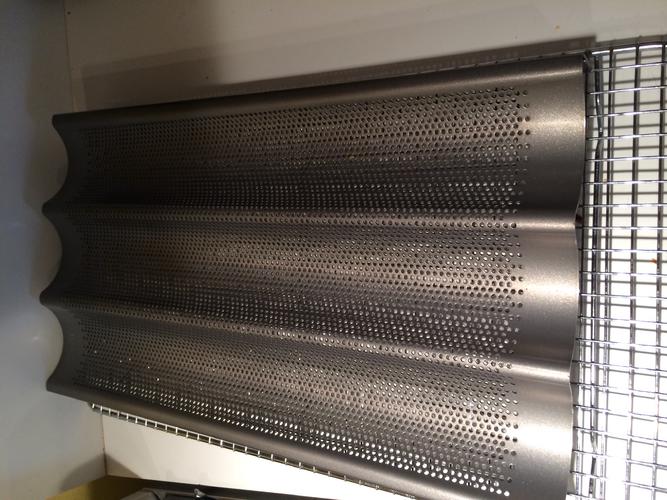Results 41 to 50 of 1198
Thread: Who bakes bread?
-
10-10-2014, 06:29 AM #41

About 25 min later...
Not me in the picture...

Golden brown and crunchy.

-
10-10-2014, 01:12 PM #42Senior Member

- Join Date
- Apr 2014
- Location
- Berks Cty, Pa
- Posts
- 234
Thanked: 25
You are dead on, nifty shaving, with the small Dutch oven space trapping the loaf moisture in for a nice crust.
However, just recently, I got out my French loaf pan out and used the cast frying pan with water for some great results.
On the next batch I forgot the frying pan water deal, and the crust was the same; still great. Go figure.
I also tried some oat flour with steel cut oats mixed in too. Like I said before, plain straight white is the flavor king for me, but I keep trying other stuff.
-
12-24-2014, 11:34 PM #43I used Nakayamas for my house



- Join Date
- Aug 2009
- Location
- Des Moines
- Posts
- 8,664
- Blog Entries
- 1
Thanked: 2591
-
01-16-2015, 04:26 PM #44Senior Member



- Join Date
- Jul 2012
- Location
- Chicagoland - SW suburbs
- Posts
- 3,811
- Blog Entries
- 1
Thanked: 734
Made a few baguettes for the weekend.

-
01-17-2015, 01:18 PM #45Senior Member

- Join Date
- Apr 2014
- Location
- Berks Cty, Pa
- Posts
- 234
Thanked: 25
Nice looking loaves and slash marks.
I am now using a baking stone that I picked up years ago (1/2" x 14" x 18").
With no oven water dish, just stone and dough, I am turning out some supper breads with a nice crisp crust.
I set the formed dough on parchment paper for a short rise.
When ready to bake, I use a peel (spelling?) to side under paper and dough and then onto the hot stone. Use the same method to remove from oven.
-
01-17-2015, 03:17 PM #46

A study in contrasts:
#2 stepdaughter (Dietician/Nutritionist) one day asked me to teach her how to bake braided challah like my mother used to make. Seen here with her first loaf.

#1 stepdaughter (Marine Biologist) asked if she could help me break open a 911 engine the day before she got married. Seen here with her first 911 un-build.

Go figure.Last edited by MisterMoo; 01-17-2015 at 03:21 PM.
"We'll talk, if you like. I'll tell you right out, I am a man who likes talking to a man who likes to talk."
-
01-17-2015, 04:44 PM #47Senior Member



- Join Date
- Jul 2012
- Location
- Chicagoland - SW suburbs
- Posts
- 3,811
- Blog Entries
- 1
Thanked: 734
-
01-17-2015, 05:21 PM #48Senior Member


- Join Date
- Jan 2011
- Location
- Roseville,Kali
- Posts
- 10,432
Thanked: 2027
-
01-17-2015, 06:59 PM #49illegitimum non carborundum



- Join Date
- Jan 2008
- Location
- Rochester, MN
- Posts
- 11,552
- Blog Entries
- 1
Thanked: 3795
-
01-17-2015, 08:34 PM #50

Man, oh man!
How could I have missed this thread?
I'm going to bake some Irish soda bread in a couple of days. Would it be ok if I were to post the photos here?Last edited by Lolita1x2; 01-18-2015 at 12:39 AM. Reason: Misspelled word


 3013Likes
3013Likes LinkBack URL
LinkBack URL About LinkBacks
About LinkBacks






 Reply With Quote
Reply With Quote



